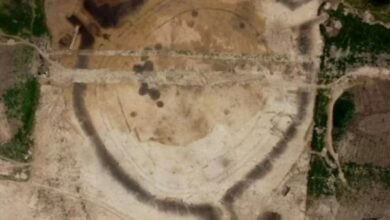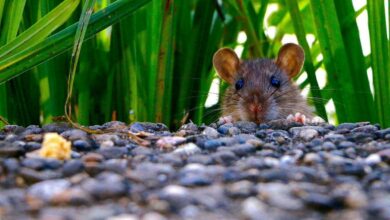Fossilized feces prove humans started domesticating livestock 2,000 years earlier than scientists thought
(ORDO NEWS) — Clues in ancient animal feces challenge the current theory that humans domesticated plants before animals.
Researchers have found preserved dung near the buried remains of ancient hunter-gatherer dwellings in Syria that date back to about 13,000 years ago.
Back in the early 1970s, Abu Hureyra’s excavations in present-day Syria revealed one of the longest known sequences of human transition from hunter-gatherers to farmers.
This place within the Fertile Crescent was a real idyllic paradise, with easy access to floodplains, steppes and forests.
It was filled with diverse flora and fauna, and its original human settlement during the Stone Age Epipaleolithic period was thought to have numbered fewer than 200 people.
The site is now submerged under Lake Assad, in a region that may be difficult to access due to ongoing conflicts. Fortunately, archaeologists of the past have carefully preserved and cataloged many specimens from this site.
It was the manure spherulites in these samples that University of Connecticut anthropologist Alexia Smith and colleagues examined to reach their conclusions. They used new methods to isolate and quantify ancient manure from newer fecal contaminants.
“Until recently, it has been difficult to find a method that would allow archaeologists to investigate the earliest experiments in animal care before they became fully domesticated animals and pastoralists,” the team said in a statement.
Agriculture and cattle breeding
Studies of this region date the cultivation of cereals to 11,500 years ago, and a number of other crops appear to have followed.
It was not until about 10,000 years ago, however, that clear evidence of animal domestication emerged during a culture labeled Pre-Potter Neolithic B. Smith and colleagues constructed a timeline from the surviving remnants of repeated and changing dung handling.
Some activities, such as the use of excrement as fuel, left clearer signals of use, as did the use of manure to cover dwelling floors.
Scientists have found that during the first part of the Epipaleolithic period (13,300 to 12,800 cal BP) there were few isolated spherulites and almost no accumulations, suggesting that there was little interaction between hunter-gatherers and living animals.
But in line with the dramatic shift in architecture towards more durable dwellings, in the second half of the Epipaleolithic period (12,800–12,300 cal. BP) there was a surge in manure associated with fire pits, and many more spherulite accumulations near the work area directly outside the home of the migrants.
The abundance of spherulites and the excess of burnt manure suggest that a small number of animals were kept and cared for on the territory. The researchers suspect that using manure as fuel for firewood was a convenient way to get rid of excess manure.
How has livestock changed?
The researchers also speculate that the animals may have served as a store of live meat to compensate for the variability in the presence of these hunter-gatherers’ primary prey, gazelles. It would also allow hunter-gatherers to occupy the same place all year round.
By Neolithic phase 2A (10,600 years ago) there are clear signs of animal care, with a well-developed herd and the use of manure to plaster floors, a practice that is now widespread in Southwest Asia.
“The data presented here mark a transition from early, short-term on-site animal care during the Epipaleolithic 1B phase to full-scale off-site grazing during Neolithic 2B,” the researchers explain.
—
Online:
Contact us: [email protected]
Our Standards, Terms of Use: Standard Terms And Conditions.









